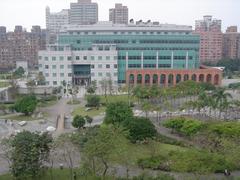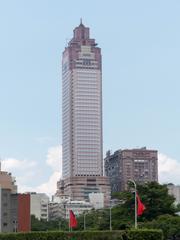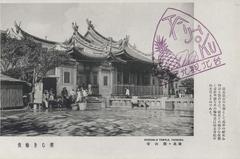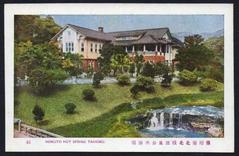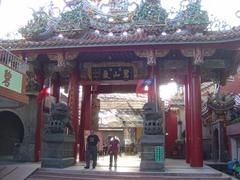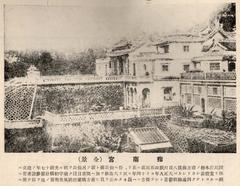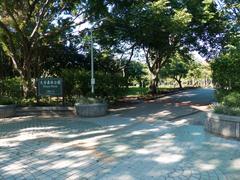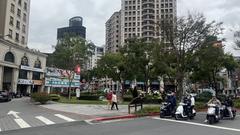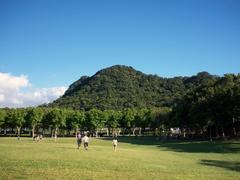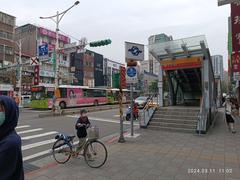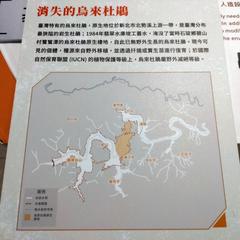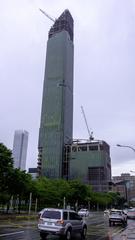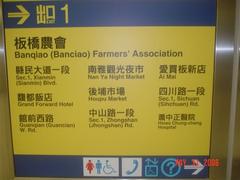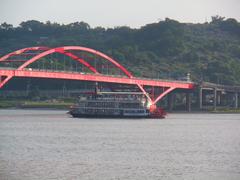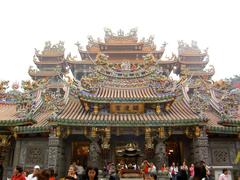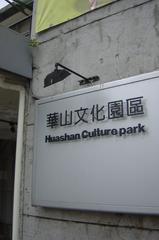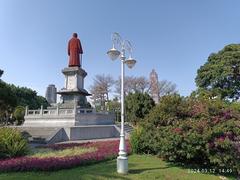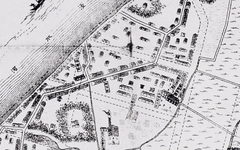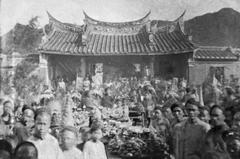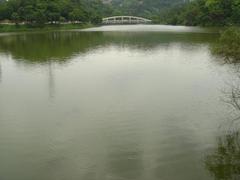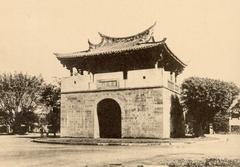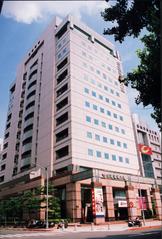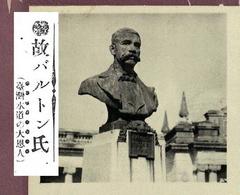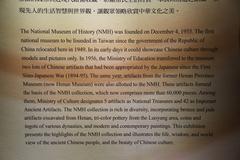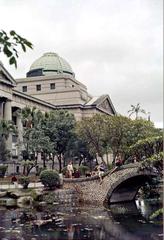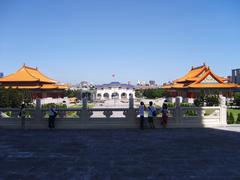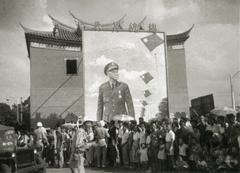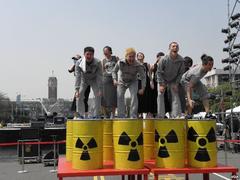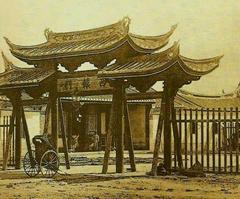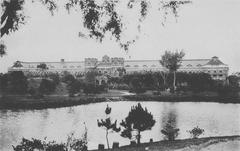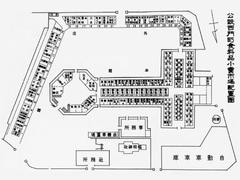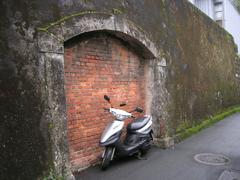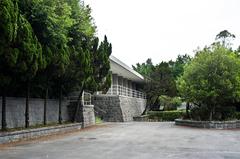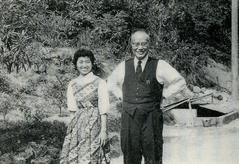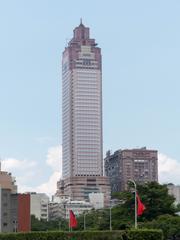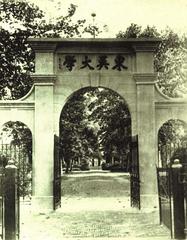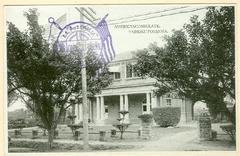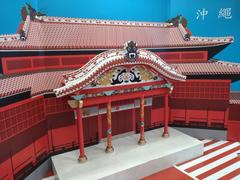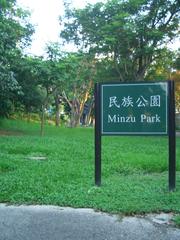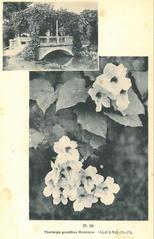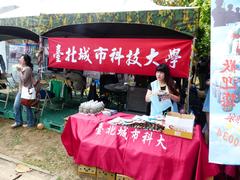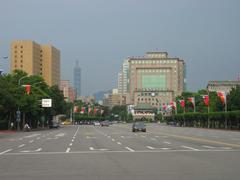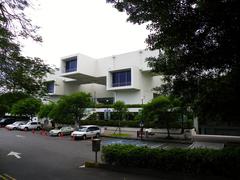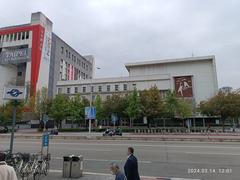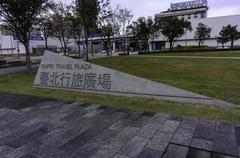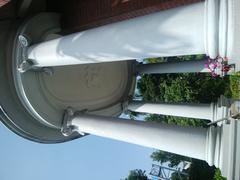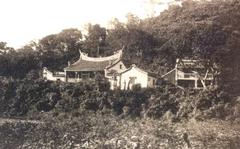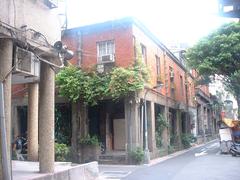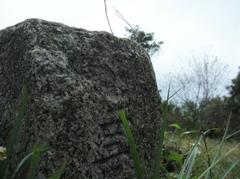Visiting Qingtiangang Grassland: Hours, Tickets, and Travel Tips
Date: 17/07/2024
Introduction
Qingtiangang Grassland is a captivating natural landscape located within Yangmingshan National Park in Taipei, Taiwan. Best known for its lush, rolling hills and panoramic views, Qingtiangang offers visitors a unique blend of natural beauty, historical significance, and cultural richness. The grassland’s origins trace back millions of years to the volcanic activities of the Datun Volcano Group, which have shaped its distinctive topography. Long before becoming a popular tourist destination, this area was inhabited by indigenous tribes and later transformed into a pastoral landscape by settlers during the Qing Dynasty and the Japanese colonial period (Exploring Qingtiangang Grassland). Today, Qingtiangang stands as a testament to the harmonious interplay between nature and human history, offering a sanctuary for both wildlife and visitors seeking a respite from urban life. This comprehensive guide aims to provide an in-depth look at Qingtiangang’s history, key attractions, hiking trails, visitor information, and practical tips to ensure an enriching experience for all who visit.
Table of Contents
- [Exploring Qingtiangang Grassland](#exploring-qingtiangang-grasslandexploring-qingtiangang-grassland)
- [Volcanic Origins and Early Inhabitants](#volcanic-origins-and-early-inhabitantsvolcanic-origins-and-early-inhabitants)
- [From Grazing Grounds to Tourist Destination: A Timeline of Transformation](#from-grazing-grounds-to-tourist-destination-a-timeline-of-transformationfrom-grazing-grounds-to-tourist-destination-a-timeline-of-transformation)
- [19th Century](#19th-century19th-century)
- [Early 20th Century (Japanese Colonial Period)](#early-20th-century-japanese-colonial-periodearly-20th-century-japanese-colonial-period)
- [Mid-20th Century (Post-War Period)](#mid-20th-century-post-war-periodmid-20th-century-post-war-period)
- [Late 20th Century to Present](#late-20th-century-to-presentlate-20th-century-to-present)
- [Visitor Information](#visitor-informationvisitor-information)
- [Visiting Hours](#visiting-hoursvisiting-hours)
- [Tickets](#ticketstickets)
- [Travel Tips](#travel-tipstravel-tips)
- [Nearby Attractions](#nearby-attractionsnearby-attractions)
- [Significance of Qingtiangang](#significance-of-qingtiangangsignificance-of-qingtiangang)
- [Frequently Asked Questions (FAQ)](#frequently-asked-questions-faqfrequently-asked-questions-faq)
- [Conclusion](#conclusionconclusion)
- [Visiting Qingtiangang Grassland](#visiting-qingtiangang-grasslandvisiting-qingtiangang-grassland)
- [Key Attractions and Activities](#key-attractions-and-activitieskey-attractions-and-activities)
- [Hiking Trails with Panoramic Views](#hiking-trails-with-panoramic-viewshiking-trails-with-panoramic-views)
- [Cultural and Historical Landmarks](#cultural-and-historical-landmarkscultural-and-historical-landmarks)
- [Family-Friendly Activities](#family-friendly-activitiesfamily-friendly-activities)
- [Unique Natural Phenomena](#unique-natural-phenomenaunique-natural-phenomena)
- [Exploring the Surroundings](#exploring-the-surroundingsexploring-the-surroundings)
- [Practical Tips for Visiting](#practical-tips-for-visitingpractical-tips-for-visiting)
- [FAQ](#faqfaq)
- [Conclusion](#conclusionconclusion)
- [Internal and External Links](#internal-and-external-linksinternal-and-external-links)
- [Visuals and Media](#visuals-and-mediavisuals-and-media)
- [Key Attractions and Activities](#key-attractions-and-activitieskey-attractions-and-activities)
Exploring Qingtiangang Grassland
Volcanic Origins and Early Inhabitants
The story of Qingtiangang begins millions of years ago with the fiery birth of the Datun Volcano Group. Volcanic eruptions, now long dormant, shaped the area’s distinctive topography, leaving behind the rolling hills and caldera formations that characterize the landscape. The fertile volcanic soil, rich in nutrients, provided a foundation for life to flourish.
Evidence suggests that long before the arrival of modern settlers, indigenous Taiwanese tribes, likely the Ketagalan people, inhabited the Yangmingshan area, which encompasses Qingtiangang. They lived in harmony with nature, relying on the land for sustenance and utilizing its resources for their livelihoods. While the specifics of their lives on the grassland remain shrouded in the mists of time, their presence is a reminder of the deep-rooted connection between humans and this land.
From Grazing Grounds to Tourist Destination: A Timeline of Transformation
19th Century
During the Qing Dynasty, the land that is now Qingtiangang underwent a significant transformation. Chinese settlers, primarily from the Fujian province, arrived in Taiwan and established communities in the Yangmingshan area. Recognizing the suitability of the grassland for grazing, they began using it as pastureland for water buffalo. This marked the beginning of Qingtiangang’s association with pastoral life, an image that continues to resonate today.
Early 20th Century (Japanese Colonial Period)
Under Japanese rule (1895-1945), Qingtiangang’s agricultural potential was further exploited. The Japanese administration established the Taipei Water Department, which recognized the importance of the area’s water resources. They constructed a system of irrigation channels and reservoirs, including the Lengshuikeng reservoir, to support agriculture and provide water to the growing city of Taipei. Qingtiangang, with its abundant water sources and fertile land, became a key area for tea plantations. Remnants of this era, such as the stone farmhouses and tea-processing facilities, can still be found, adding a layer of historical intrigue to the landscape.
Mid-20th Century (Post-War Period)
Following World War II, Qingtiangang continued to serve as a vital agricultural region. The Taiwanese government established the Yangmingshan National Park in 1985, encompassing Qingtiangang within its protected boundaries. This marked a turning point, shifting the focus from purely economic activities to conservation and recreation.
Late 20th Century to Present
With the establishment of the national park, Qingtiangang gradually transitioned into a popular tourist destination. The grassland’s natural beauty, coupled with its proximity to Taipei, made it an ideal escape from the hustle and bustle of city life. Hiking trails were established, visitor facilities were built, and Qingtiangang became renowned for its breathtaking views, unique flora and fauna, and serene atmosphere.
Visitor Information
Visiting Hours
Qingtiangang Grassland is open daily from 8:00 AM to 6:00 PM.
Tickets
Entry to the grassland is free of charge. Some special events or guided tours might have associated costs.
Travel Tips
- Best Time to Visit: The grassland is beautiful year-round, but spring and autumn offer the most pleasant weather.
- What to Bring: Comfortable walking shoes, water, sunscreen, and a camera for the stunning views.
- Accessibility: The main trails are well-maintained and suitable for visitors of all ages. Some areas might be challenging for those with mobility issues.
Nearby Attractions
- Yangmingshan National Park: A treasure trove of natural beauty, including hot springs, hiking trails, and diverse flora and fauna.
- Lengshuikeng: A scenic area with hot springs and a visitor center, perfect for a relaxing soak after a hike.
- Zhuzihu: Famous for its calla lily fields in spring and hydrangeas in summer.
Significance of Qingtiangang
Today, Qingtiangang Grassland stands as a testament to the interplay between nature and human history. Its significance is multifaceted:
- Ecological Significance: As part of Yangmingshan National Park, Qingtiangang plays a crucial role in preserving the biodiversity of Taiwan’s northern region. The grassland ecosystem supports a variety of plant and animal life, including several endemic species. The park authorities are actively involved in conservation efforts to protect this delicate balance.
- Historical Significance: The remnants of past eras, from the indigenous presence to the Japanese colonial period, are embedded in Qingtiangang’s landscape. These historical layers offer a glimpse into the area’s evolution and provide a tangible connection to its past.
- Cultural Significance: Qingtiangang holds a special place in the hearts of many Taiwanese people. It is a place where city dwellers can reconnect with nature, enjoy leisurely walks, and experience a sense of tranquility. The grassland has also been featured in Taiwanese literature and films, further cementing its place in the cultural consciousness.
- Recreational Significance: Qingtiangang is a haven for outdoor enthusiasts. Its well-maintained hiking trails offer varying levels of difficulty, catering to both casual walkers and experienced hikers. The panoramic views from the grassland are simply breathtaking, especially during sunrise and sunset.
Frequently Asked Questions (FAQ)
-
What are the opening hours of Qingtiangang Grassland?
- Qingtiangang Grassland is open daily from 8:00 AM to 6:00 PM.
-
How much are the tickets for Qingtiangang Grassland?
- Entry to the grassland is free of charge. Some special events or guided tours might have associated costs.
-
Is Qingtiangang Grassland accessible for people with mobility issues?
- The main trails are well-maintained and suitable for visitors of all ages. Some areas might be challenging for those with mobility issues.
Conclusion
Qingtiangang Grassland is more than just a picturesque landscape; it is a living testament to the passage of time, bearing witness to volcanic upheavals, human endeavors, and the enduring power of nature. A visit to Qingtiangang is not just a trip to a scenic spot; it is a journey through time, offering a glimpse into the past and a moment of reflection in the present. For more information, check out Yangmingshan National Park’s official website or follow us on social media for updates and travel tips.
Visiting Qingtiangang Grassland
Key Attractions and Activities
Qingtiangang Grassland offers a diverse range of attractions and activities that cater to all types of visitors. Whether you’re a nature enthusiast, history buff, or simply seeking breathtaking views, this scenic destination in Taipei has something for everyone.
Hiking Trails with Panoramic Views
Immerse yourself in the natural beauty of Yangmingshan National Park by exploring the numerous hiking trails that crisscross Qingtiangang Grassland. These trails offer varying levels of difficulty, making them suitable for both casual walkers and experienced hikers.
- Lengshuikeng Trail: This easy 1.6 km loop trail takes you through lush forests and offers stunning views of the surrounding mountains.
- Mt. Qixing Main Peak Trail: For a more challenging hike, embark on the 4.2 km trail leading to the summit of Mt. Qixing, the highest peak in Taipei.
- Dajian Trail: This moderate 2.4 km trail winds through bamboo forests and offers glimpses of the grassland’s unique volcanic landscape.
As you hike, be sure to keep an eye out for the abundant wildlife that calls Qingtiangang home, including various bird species, butterflies, and the occasional grazing water buffalo.
Cultural and Historical Landmarks
Qingtiangang Grassland is steeped in history, and remnants of its past can be found scattered throughout the area.
- Qingtiangang Visitor Center: Start your journey at the visitor center, where you can learn about the grassland’s history, geology, and ecology through informative exhibits.
- Stone Shelters: Discover the traditional stone shelters scattered across the grassland, which were once used by farmers to protect themselves from the elements and wild animals.
- Abandoned Ranch: Explore the remnants of the abandoned dairy farm, a reminder of the area’s agricultural past when it served as a cattle grazing ground.
Family-Friendly Activities
Qingtiangang Grassland is an ideal destination for families with children, offering a range of activities that are both entertaining and educational.
- Kite Flying: Take advantage of the open expanse and gentle breezes by flying a kite on the grassland.
- Picnicking: Pack a lunch and enjoy a leisurely picnic amidst the picturesque scenery. Designated picnic areas are available.
- Photography: Capture the beauty of the grassland’s landscapes, flora, and fauna with your camera. The ever-changing light and weather conditions provide endless photographic opportunities.
Unique Natural Phenomena
Qingtiangang Grassland is known for its unique natural phenomena, which add to its allure and provide visitors with unforgettable experiences.
- Miscanthus Silvergrass: Witness the mesmerizing sight of the Miscanthus silvergrass swaying in the wind, especially during the autumn season when it transforms into a sea of golden hues.
- Frost Flowers and Rime Ice: During the winter months, when temperatures drop below freezing, the grassland is often adorned with delicate ice crystals known as “frost flowers” and “rime ice,” creating a magical winter wonderland.
- Stargazing: Due to its elevation and minimal light pollution, Qingtiangang Grassland offers excellent stargazing opportunities. On clear nights, visitors can marvel at the vast expanse of the night sky.
Exploring the Surroundings
While Qingtiangang Grassland itself offers plenty to see and do, be sure to explore the surrounding area, which boasts additional attractions and activities.
- Yangmingshan National Park: Embark on further adventures in Yangmingshan National Park, home to hot springs, volcanic craters, and scenic hiking trails.
- Zhuzihu: Visit the nearby Zhuzihu area, known for its numerous calla lily farms, especially during the blooming season from March to May.
- Lengshuikeng: Take a dip in the rejuvenating hot springs of Lengshuikeng, known for their therapeutic properties.
Practical Tips for Visiting
To make the most of your visit to Qingtiangang Grassland, consider these practical tips:
- Getting There: The most convenient way to reach Qingtiangang Grassland is by bus from either Jiantan MRT Station or Shilin MRT Station.
- Weather: The weather in Yangmingshan National Park can be unpredictable, so it’s advisable to check the forecast before your visit and dress in layers.
- Footwear: Wear comfortable walking shoes, as you’ll be doing a fair amount of walking, especially if you plan on hiking.
- Sun Protection: Protect yourself from the sun by wearing sunscreen, a hat, and sunglasses.
- Food and Drinks: While there are a few food stalls near the visitor center, it’s recommended to bring your own snacks and drinks, especially if you plan on hiking.
- Respect Nature: Help preserve the beauty of Qingtiangang Grassland by staying on designated trails, refraining from littering, and respecting the local flora and fauna.
FAQ
-
What are the visiting hours for Qingtiangang Grassland?
- The grassland is open 24 hours a day, but the visitor center typically operates from 9:00 AM to 4:30 PM.
-
Is there an entrance fee for Qingtiangang Grassland?
- No, there is no entrance fee to visit Qingtiangang Grassland.
-
When is the best time to visit Qingtiangang Grassland?
- The best time to visit is during the autumn months for the Miscanthus silvergrass or during spring for pleasant weather and blooming flowers.
-
Are there guided tours available?
- Yes, guided tours can be arranged through the visitor center or local tour operators.
Conclusion
By following these tips and immersing yourself in the natural splendor and cultural heritage of Qingtiangang Grassland, you’re sure to create lasting memories of your visit to this enchanting destination in Taipei. For more information, download our mobile app Audiala, check out other related posts, or follow us on social media for updates.
Internal and External Links
Visuals and Media
Conclusion
In conclusion, Qingtiangang Grassland is more than just a scenic retreat; it is a living chronicle of the intricate relationship between nature and human history. From its volcanic origins and indigenous roots to its transformation into a pastoral and agricultural hub, Qingtiangang has evolved into a beloved destination that offers a multitude of experiences. Whether you’re an avid hiker, a history enthusiast, or a family looking for a peaceful picnic spot, Qingtiangang has something to offer. The grassland’s rich biodiversity, historical landmarks, and unique natural phenomena make it a must-visit destination in Taipei. By following the practical tips and visitor information provided, you can fully immerse yourself in the beauty and tranquility of this natural gem. As you explore the grassland and its surroundings, you’ll gain a deeper appreciation for the ecological, historical, and cultural significance that makes Qingtiangang Grassland a truly multifaceted destination (Yangmingshan National Park).
References
- Exploring Qingtiangang Grassland - History, Visiting Hours, and Travel Tips, 2024, Yangmingshan National Park official website
- Visiting Qingtiangang Grassland - Key Attractions, Hiking Trails, and Visitor Tips, 2024, Yangmingshan National Park official website
- Visitor Information and Practical Tips for Qingtiangang Grassland - Tickets, Hours, and Travel Guide, 2024, Yangmingshan National Park official website
